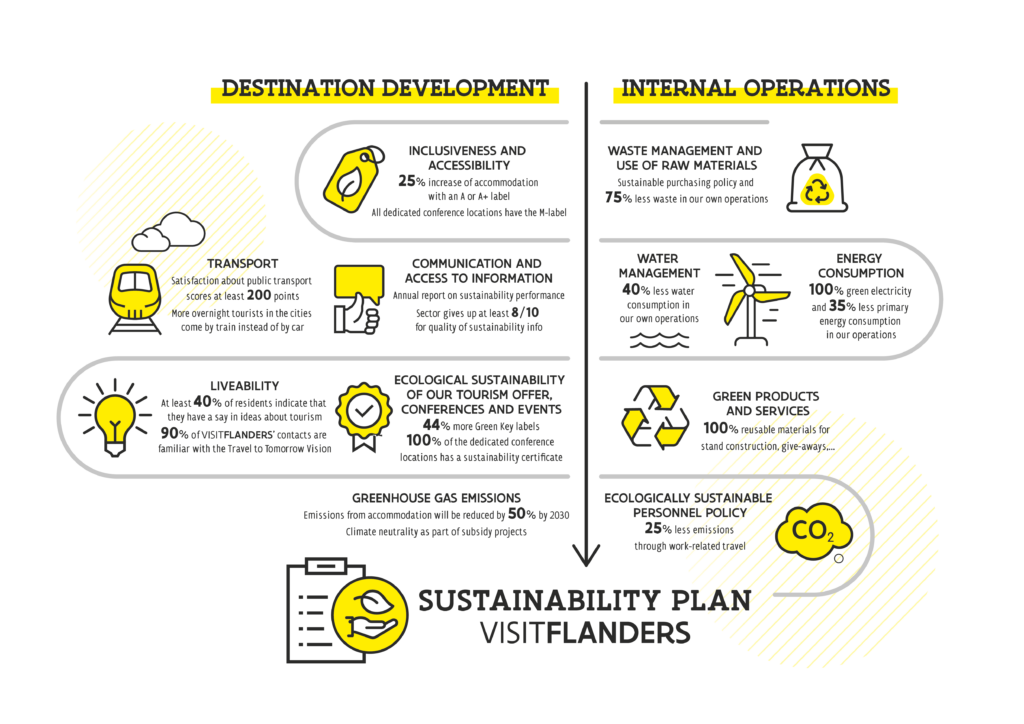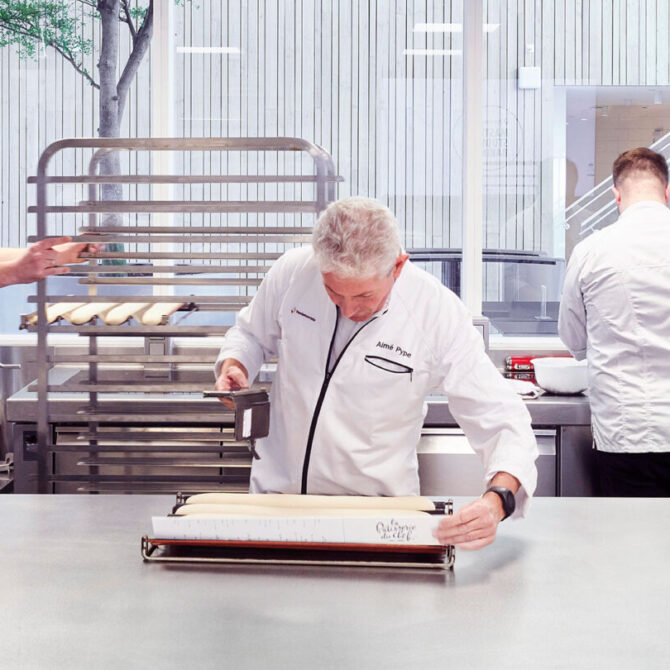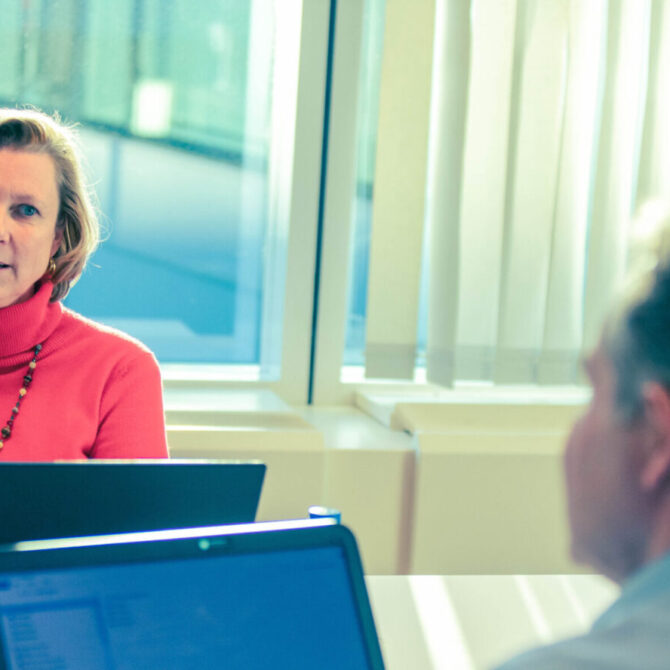Tourism is booming again. In 2022, the year that COVID-19 restrictions are being lifted worldwide, tourism is recuperating from the pandemic. In the first five months of the year, international tourism recovered to almost half of 2019 levels, and the expectation is that international arrivals will reach 55% to 70% of pre-pandemic levels by the end of 2022. Europe alone received 350% more international arrivals between January and May compared to the same period the year before (UNWTO).
Likewise, tourism is rapidly recovering in Flanders, one of the three Belgian regions and home to many beautiful cities such as Bruges, Ghent, and Antwerp. At the height of the pandemic in 2020, tourist arrivals dropped 62.2% to 5.4 million. In 2021, it grew again by 43% to 7.5 million. And in the first six months of 2022, Flanders recorded a 167% increase in tourist arrivals compared to the same period in 2021 (VISITFLANDERS).
While tourism is a major source of employment and economic prosperity for Flanders, it may also bring unintended negative consequences for the region, its inhabitants, and the environment.
- Overtourism, the excessive influx of tourists, negatively affects the quality of life or experience of a place. This is already the case in popular destinations like Barcelona, Venice, and Amsterdam[1].
- On top of this, global tourism causes 8% of all CO2 emissions[2].
Both issues make clear that the traditional tourist model does not lead to flourishing destinations. Our client, VISITFLANDERS, acknowledged this already in 2014 and started developing a new vision on tourism. Tourism that would not only be future-proof, but also positively contribute to society.
Their vision, Travel to Tomorrow, is founded on the insight that tourism should no longer be the end goal. Instead, tourism helps local communities prosper. Concretely, the organisation wants to strengthen the positive power of tourism to help Flanders flourish as an innovative and high-quality travel destination that inspires residents, entrepreneurs, and visitors alike.
The challenge
VISITFLANDERS’ vision and corresponding strategy, Flora et Labora, aim to transform tourism into a means to create positive impact for society, its citizens, and the planet. Yet, in 2020, the results of the Global Destination Sustainability Index found that VISITFLANDERS, and the Flemish region in general, were not yet fully exploiting their sustainability potential.
VISITFLANDERS turned to Sustenuto to structurally integrate sustainability in their Flora et Labora strategy by:
- Defining SMART objectives[3].
- Developing a sustainability plan linked to these objectives.
Our approach
We came up with a clear plan of action to tackle this twofold challenge and bring it to fruition. Our approach, based on our Sustainability Growth Model™, included:
- An analysis of the external context, including a benchmark of leading regions and countries, in terms of sustainable tourism.
- Workshops with a transversal group of internal experts of VISITFLANDERS to map and prioritise actions already underway within the new Flora and Labora strategy.
- With the expert group, we defined SMART objectives, remaining closely connected to the sustainability ambitions of the management of VISITFLANDERS.
Once the SMART objectives were validated by the management, we helped VISITFLANDERS develop a sustainability plan with concrete actions to obtain them.

Discover VISITFLANDERS’ sustainability plan
Finally, we set up a baseline to determine the gap between the current situation and the envisioned goals, and assess the feasibility and effectiveness of the actions within the sustainability plan.
In practice: Heritage experience
An example of an activity that encapsulates the Travel to Tomorrow philosophy and creates value for tourists, local entrepreneurs, and citizens is the pilot project “The Garden of the Present”. With this project, VISITFLANDERS aims to give a new destination to the St Godelieve Abbey and its monastery in Bruges.
In the summer of 2021, the abbey opened its doors to the public. Visitors got the chance to share their vision for the abbey’s future. With the help of AI, VISITFLANDERS clustered and analysed the – almost 5,000 – responses. The common storylines and patterns were then discussed and enriched with the insights and knowledge of 40 experts, among which our managing director, Dirk Le Roy.
Dirk shares the conclusions of his work group: “The strength for the future of the St Godelieve Abbey is mainly the combination of different functions: small-scale events, coworking spaces for local entrepreneurs, tourist activities combined with healthcare activities that benefit from the meditative surroundings…And all this in a unique place where there is enough space to allocate to the different functions.”
In a next phase, VISITFLANDERS is working with an architecture firm to design the future of the abbey. In addition, they are considering the different possibilities in terms of entrepreneurship and ownership.
Learn more about the project (in Dutch):
The results
The SMART objectives and sustainability plan help VISITFLANDERS strengthen the positive power of tourism so that Flanders can flourish as an innovative and inspiring travel destination. A prosperous and sustainable future for the region, its inhabitants, and its visitors.
Tourism faces a number of special challenges. We’re evolving from more tourism to better tourism, and from a marketing organisation to a destination management organisation. This is all connected to sustainability and with this project, we succeeded in changing sustainability from a broad and complex issue to a clearly structured plan with concrete choices.
Peter De Wilde, acting CEO of VISITFLANDERS
Read more about VISITFLANDERS’ vision, goals, and activities for the future via the dedicated website www.traveltotomorrow.be.
[1] Source: responsible tourism partnership
[2] Source: The carbon footprint of global tourism
[3] Specific, Measurable, Achievable, Relevant, and Time-bound
© Photo: Toerisme Vlaanderen



